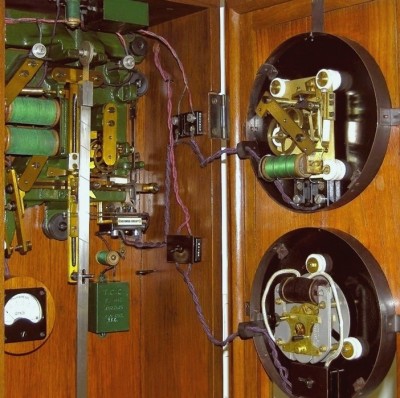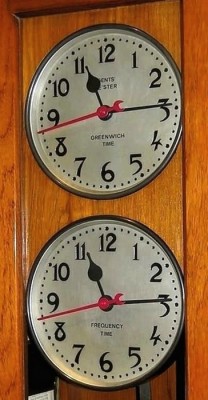Mains Controller
In the beginning of the 20th century AC (Alternating Currency, in the UK and in Europe 50 cycles per second, in de US 60 times) was preferred over DC (Direct Current) because it was easier to transport over long distances.
When the law on the Electricity Board was adopted in 1929, this law required an “accuracy” of the frequency of 2.5%, equal to a clock error of about half an hour per day. This shows that in those days the frequency was not yet regarded to be used for time keeping.
This band width was tightened rather fast over the years enabling the use of synchronous motors for time keeping.
The frequency controlling Master, shown here was used in a power station to check the accuracy of the frequency.
When the demand for electric current rises, the generators have to be speeded up while when the demand was falling, the generators could be slowed.
This changing of the speed was and still is done in such a way that a minimum of energy for the generators is required. This explains the deviation of the frequency time with the standard time. Within 24 hours deviations of ca. 60 seconds are possible, on the long term the frequency is however a very good time keeper.
NR. LH3662 14.8.34 Master clock to controll the frequency of the Mains at a power (sub)station.
This Master is controlled by means of a Reflex unit, described under “Other Devices”.

 ….
….